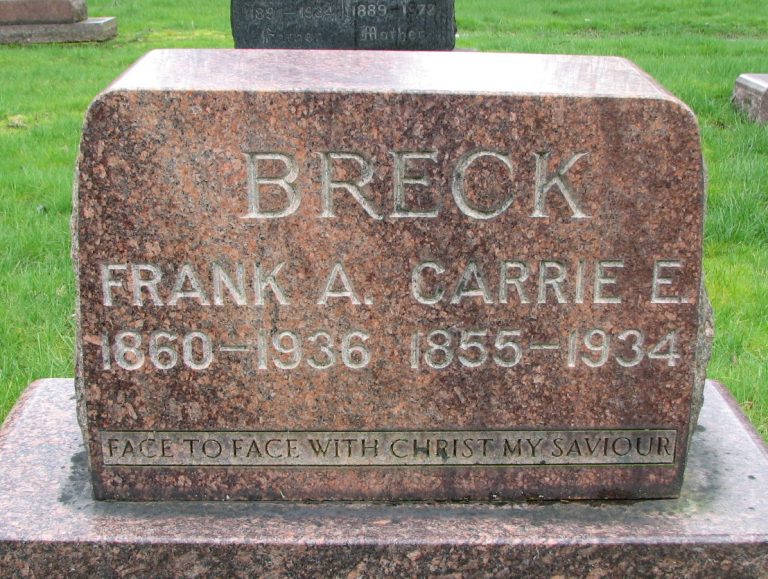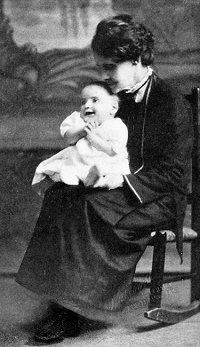Hymn History: Face to Face & Author: Carrie Elizabeth Ellis Breck
“I penciled verse under all sorts of conditions—over a mending basket, with a baby in arms, and sometimes even when sweeping or washing dishes, my mind moved to meter.”
(Carrie Elizabeth Ellis Breck)
The Origin of Carrie Breck’s Hymn “Face to Face with Christ, My Savior”
Hymns about heaven have always held a cherished place in Christian worship. They remind believers that the trials of this life are temporary and that eternal joy awaits in the presence of the Lord. Among such hymns, few are as beloved as “Face to Face with Christ, My Savior.” With words written by Carrie Ellis Breck and music composed by Grant Colfax Tullar, this hymn captures both the longing and the hope of seeing Christ in glory.
Carrie E. Breck: A Poet of the Heart
Carrie Ellis Breck (1855–1934) was a Vermont-born housewife and mother who, despite living with frail health, became a prolific writer of sacred verse. She had a natural gift for poetry and composed more than 1,500 poems in her lifetime. Many of these were later set to music by prominent gospel composers of the day. Breck did not read music and had no formal musical training, but her verses were filled with imagery, biblical truth, and heartfelt devotion.
Breck’s life was marked by simplicity. She devoted herself to her home and family while writing poetry in her spare time. Her work found its way into the hands of hymn composers, who recognized the spiritual depth and lyrical quality of her verses. It was this partnership between her words and the music of composers like Grant Tullar that gave the church some of its most enduring hymns.
The Inspiration Behind the Hymn
“Face to Face with Christ, My Savior” reflects Breck’s deep sense of anticipation for heaven. Drawing upon 1 Corinthians 13:12—“For now we see through a glass, darkly; but then face to face”—the hymn offers a poetic meditation on the Christian’s hope of eternal communion with Christ.
The verses highlight the contrast between the struggles and limitations of earthly life and the fullness of joy that awaits in the presence of the Savior. Breck wrote in a way that ordinary believers could immediately understand: the hymn is not philosophical or abstract but personal and tender. Each stanza reflects her conviction that, while faith sustains us now, sight will one day replace faith, and the believer will behold Christ in all His glory.
Grant Colfax Tullar and the Music
The hymn gained its lasting power through the music of Grant Colfax Tullar (1869–1950), a Methodist minister, musician, and composer. Tullar was well-known for his work in the gospel song movement, and his compositions were widely sung in churches, revival meetings, and Sunday schools.
When Tullar encountered Breck’s poem, he recognized its potential as a hymn text. He set her words to a graceful, uplifting melody that carried both the solemnity and the joy of the text. The result was a hymn that was easy for congregations to sing, yet profound in its message. Published in 1898, the song quickly found its way into hymnals across denominations.
Early Reception and Use
From its publication onward, “Face to Face with Christ, My Savior” resonated deeply with congregations. It was especially cherished in times of grief, funerals, and memorial services, as it expressed hope beyond death. Yet it was also a hymn of daily encouragement, reminding Christians that every step of the earthly journey is leading toward the eternal presence of Christ.
Its refrain, repeating the exclamation “Face to face with Christ, my Savior, face to face—what will it be,” struck a chord with worshippers. The repetition underscored both the longing of faith and the certainty of hope, making it memorable for generations of singers.
Themes of the Hymn
The central theme of the hymn is the Christian’s hope of seeing Christ in person. Breck’s lyrics affirm that while trials, shadows, and sorrows characterize life in this world, the believer’s future is certain and bright. The hymn encourages perseverance, assuring the singer that “sorrow vanquished, joy restored” will one day be the believer’s reality.
In this way, Breck captured both realism and hope: realism in acknowledging the burdens of earthly existence, and hope in pointing to the eternal joy of God’s presence. This balance made the hymn not only comforting but also motivating, urging believers to live in light of eternity.
Lasting Legacy
Over a century later, “Face to Face with Christ, My Savior” remains a staple in many hymnals. It has been sung at countless worship services, revival meetings, and funerals, continuing to bring comfort and encouragement. Its enduring popularity is a testament to the power of Breck’s words and Tullar’s music, a partnership that joined heartfelt poetry with a melody that the church could carry for generations.
Carrie Breck, though never a household name, left behind a hymn that has ministered to millions. In its simplicity and sincerity, it conveys the deepest longing of the Christian faith: the hope of eternal fellowship with Jesus Christ.
Conclusion
The origin of “Face to Face with Christ, My Savior” is a story of collaboration and inspiration. Carrie E. Breck’s heartfelt words, born from her devotion and hope in Christ, found a fitting voice through Grant Tullar’s melody. Together, they created a hymn that continues to inspire believers to look forward with anticipation to the day when faith will become sight. Its message is timeless: though life brings trials and shadows, the Christian’s destiny is to see Christ face to face, and in that moment, to know fullness of joy forevermore.
Related
Sorry, no records were found. Please adjust your search criteria and try again.
Sorry, unable to load the Maps API.

